The Story of Culture and Arts
- Image resource of Korean history
- Documents from History TextBooks
- Culture & Art Stories from Korean History
- Culture & Art Stories from Korean History - Korean
- National Institute of Korean History
- History net
- About the site
- Introduce
-
Numerous topics related to Korean culture and art are mentioned in middle and high school national history textbooks, but most of them are briefly described by era, making it difficult to understand their concepts, transition processes, and characteristics.
<Culture & Art Stories from Korean History> produces and provides video materials based on expert commentary on the flow, change process, characteristics and characteristics of each major topic in the field of culture and art in Korean history.

Scenario
A tomb represents the religion, social status and the life of the dead.
As such, kings still remained kings in the afterlife.
Tombs, Messages from the Dead
Tombs changed and evolved into various forms through the ages.
They reveal the religion and social status of the dead.
Stories of art and culture in textbooks!
Today’s theme is “ancient tombs.”
Political power, social class structure and the desire to pass down power through funeral rituals became apparent since the Bronze Age. However, all of this was never about the dead but about the living.
According to the building materials, tombs can be sorted into pit tombs, wooden tombs and stone tombs.
Pit tombs / Pit tombs, Jar coffins
Wood / Wooden coffin tombs, Wooden cist tombs, Wooden chamber tombs
Stone/ Dolmen, Stone cist tombs
| Late Neolithic Age : China (Appeared in the Bronze Age to the Iron Age in Korea) |
Jar coffins |
| Bronze Age | Dolmen, stone cist tombs |
| Early Iron Age and Three Han States Period | Wooden coffin tombs, wooden cist tombs |
| Goguryeo | Stone mound tombs, stone chamber tombs, mural painting tombs |
| Baekje | Stone mound tombs, brick tombs, stone chamber tombs |
| Gaya | Wooden cist tombs, stone lined tomb |
| Silla | Stone mound and wooden cist tombs, stone chamber tombs |
| Unified Silla | Stone chamber tombs, bone jars |
| Balhae | Brick tombs, stone lined tombs, stone chamber tombs |
| Goryeo | Stone chamber tombs, murals found in King Gongmin’s Tomb |
| Joseon | Lime mixture lined tombs |
As you can see, there are many different types of tombs.
The tomb we must take note of is the first type.
It is a well known tomb type. It is the dolmen.
Korea influenced by the cultures of
Northern and Northeastern China regions in the Bronze Age!
A leading type of tomb in the Bronze Age
Dolmen
Table type, Capstone type, Go-table type
Table type : Four-sided chamber that is covered with a megalithic roof after laying the body
Widespread in Northeastern China, Pyeongannam-do and Hwanghae-do Provinces of Korea
Among the three kingdoms, Goguryeo was the first to establish an ancient country system and had a huge influence on East Asia’s international order.
Tombs in Goguryeo
Various types of tombs found in Goguryeo
What is the most noticeable tomb?
It is the mural painting tomb.
1st Period
- 3rdtoEarly5thCentury
- Anak Tomb No. 3 from Pyongyang, Anak area, Deokheung-ri Mural Painting Tomb
- Korean wrestling tomb and Martial Arts tomb from the Jian area
- Depiction of Buddhistic symbols such as lotus flowers
2nd Period
-Mid-5thtoEarly6thCentury
- Jangcheon Tomb No. 1: Gate guard, Feast with dancing and singing, Various entertainment and musical performance, Hunting scene, Bodhisattva and Stone Buddha, Buddhist service scene, Image of flying Apsaras, Image of musical instrument playing Apsaras, Lotus flower motif, Image of celestial bodies, The Big Dipper, Four Guardian Deities Painting
- Ssangyeongchong: Gate guard, Tomb owner’s portrait, Scene of procession on its way to make offerings to Buddha
-Deokhwa-ri Tomb No. 1: Depicts imaginative yet realistic images
3rd Period
- Mid-6th to 7thCentury
- Jinpa-ri Tomb No. 4: Lotus pond mural shows strong Buddhistic characteristics
- Gangseo Large-sized Tomb, Gangseo Mid-sized Tomb: Regarded as the best among images of 4 Guardian Deities in that it has outgrown the artistic influence of the Southern Dynasties in China
Baekje founded in the Hangang River basin by immigrants from Buyeo and its history can be divided into the Hanseong period, Ungjin period and Sabi period.
Seokchon-dong Ancient Baekje-era Stone Mound Tomb, Songsalli Ancient Tomb and Neungsalli Ancient Tombs in Buyeo represent the ancient tombs of each period.
Seokchon-dong Ancient Tomb
A tomb of a king or a member of the ruling class in early Baekje period.
Stone mound tomb in the style of early Goguryeo tombs.
Royal Tomb of King Muryeong
Only royal tomb from the Three Kingdoms period that shows the completion date
and the name of the owner of the tomb.
White porcelain oil lamps were placed to light up the chamber.
The coffins of the king and queen are also located in this chamber.
Stone animals were placed to chase away evil spirits and protect King Muryeong and his queen.
Royal Tomb of King Muryeong reflects the culture of the Southern Dynasties in China.
Gilt-bronze Incense Burner of Baekje
Most of the Buyeo Ancient Tombs are stone chamber tombs.
Reflects the changes and developments in tombs after the capital was moved to Ungjin.
Stone chamber tombs changed from vault ceiling type
to intersecting triangular ceiling type.
What comes to your mind when you think about Silla?
I am reminded of Gyeongju, a school trip and Queen Seondeok.
Silla, the Kingdom of Gold.
Silla
Announced the law in the 6thcentury
Silla accepted Buddhism and established the ancient kingdom system.
Gold artifacts such as crowns and earrings excavated from tombs
These represent tombs of Silla, the Kingdom of gold.
The identities of the owners of the ancient tombs of Silla remain a mystery.
Assumptions on the identities were made based on the artifacts.
As befitting its moniker, the kingdom of gold, most of the artifacts were gold crowns
and gold ornaments. We can learn more about gold artifacts from the Silla period
through Geumgwanchong Ancient Tomb.
Geumgwanchong Ancient Tomb has recently come into the spotlight.
It is the first ancient tomb of Silla that showed clues to the identity of the owner.
The name, “King Isaji,” was found on the “Sword with Ring Pommel” discovered in
Geumgwanchong Ancient Tomb in July 2013.
“There are many theories such as the King Soji theory, King Nulji theory
and Isabu theory on who King Isaji is. Along with this, the question of when
the Silla stone mound and wooden cist tomb was built is still in dispute.”
-Cheonmachong Ancient Tomb, a tomb built in 5-6thcentury,
assumed to be a tomb of a king
- A leading example of the stone mound and wooden cist tomb from the Silla period
- The artifacts we should take note of!
- Excavated along with gold crown and gold belt
- Flying horse drawn on birch bark
- Jangni Cheonmado (Painting of Heavenly Horse on a Saddle Flap)
Silla finally unified the three kingdoms and began the Unified Silla Dynasty.
Buddhism, which ruled Silla spiritually, had a huge social and cultural impact during the Unified Silla period.
Its influence can also be seen in tombs.
Unified Silla Tomb
Leading example of tombs in Silla, stone chamber tomb
Under Buddhism, cremation also became widespread.
Unified Silla tomb that is at its most complete stage among the royal tombs
Gwoereung Royal Tomb
A tomb complete with stone figure and roads
Gwoereung Royal Tomb
The mound is surrounded by stones.
In front of the tomb, there are statues of twelve zodiac animals,
an official, a warrior and a lion.
Influenced the royal tombs of the Goryeo and Joseon Dynasties
Royal tombs of Unified Silla are meaningful
in that they were the first Korean-style royal tombs.
Gwoereung Royal Tomb, Gyeongju - Statues of an official, warrior and stone lion stand in front of the tomb surrounded by statues of twelve zodiac animals
Royal tombs of Unified Silla are meaningful
in that they were the beginning of Korean-style royal tombs.
Statues of twelve zodiac animals and clay figurines in tombs of kings
Statues of twelve zodiac animals situated around the tomb
The kingdom that was praised as “the flourishing land in the East” in China
Balhae, a culturally advanced country,
had the most extensive territories in Korea’s history.
As if to show that, the tombs of the powerful
and the elite are elaborate and grand.
A leading example of the tomb with an intersecting triangular ceiling
Royal Tomb of Princess Jeonghye
Dividable into two types - Ones with flat ceilings and ones with intersecting triangular ceiling
Elaborately finished slabs are erected.
A pedestal for the coffin inside the stone chamber
A tomb of a member of the highest ruling class
Social status, religion, culture
The art that shows all these and more, Tombs
-------------------------------------
Script advisor: Kim Jae-hong
Scenario composition: Ahn Hyeon-jin, Kim Min-sang
Voice actor: Oh Soo-gyeong
MC: Ju Hye-bin, Hwang Ba-ul
Illustration: Lee Kwang-il
Research material support: National Museum of Korea, Gyeongju National Museum, Cultural Heritage Administration, Hanseong Baekje Museum, E-Museum
Director: Kim Hyeong-woo, Lee Hyeok-roh, Lee Yeon-sik
Planning and Production: Arirang TV Media
Architecture
12 films-
 Fortresses - walled towns in Korea09:15
Fortresses - walled towns in Korea09:15 -
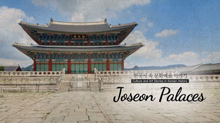 Joseon Palaces08:46
Joseon Palaces08:46 -
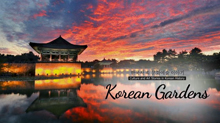 Korean Gardens08:34
Korean Gardens08:34 -
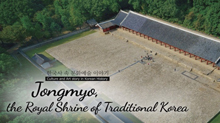 Jongmyo, the Royal Shrine of Traditional Korea09:05
Jongmyo, the Royal Shrine of Traditional Korea09:05 -
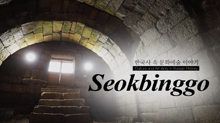 Seokbinggo, or Stone Ice Storage08:18
Seokbinggo, or Stone Ice Storage08:18 -
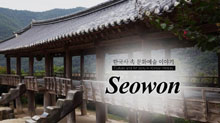 Seowon, a Neo-Confucian Academy08:22
Seowon, a Neo-Confucian Academy08:22 -
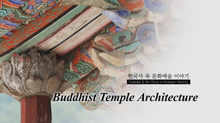 Buddhist Temple Architecture08:28
Buddhist Temple Architecture08:28 -
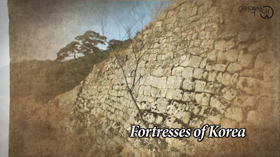 Fortresses of Korea09:12
Fortresses of Korea09:12 -
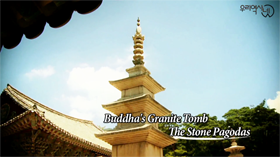 Stone Pagodas07:13
Stone Pagodas07:13 -
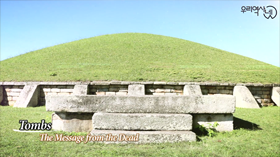 Tombs09:36
Tombs09:36 -
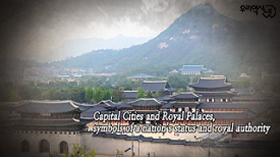 Capital Cities and Royal Palaces08:55
Capital Cities and Royal Palaces08:55 -
 Roof Tiles07:48
Roof Tiles07:48

